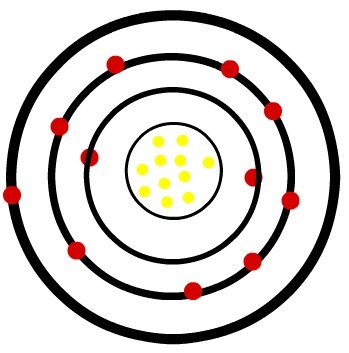When reversible reactions reach a point where the rate at which products form (direct reaction) and the speed with which products are consumed (reverse reaction) become constant and equal, we say that it has been reached O Chemical balance. Each equilibrium reaction has a equilibrium constant (Kc) characteristic, which changes only with temperature variation. If there is at least one gas participating in the reaction, it will also have a pressure constant, symbolized by Kp.
In the text Equilibrium constant Kc and Kp it is shown that to write the expressions of these constants, we have to check their physical states. Thus, two types of chemical equilibria arise, which are:
1. Homogeneous balance: They are those in which all the participants in the reaction, whether they are reactants or products, are in the same state of aggregation, and the result is a homogeneous aspect throughout the system. Generally homogeneous equilibria are formed only by gases. See some examples below and note that only the last equilibrium is a homogeneous liquid equilibrium, as all chemical species are aqueous solutions. Also note that, in these cases, all substances will appear in the expressions of Kc and Kp:
N2(g) + 3 H2(g) ↔ 2 NH3(g) Kç = __[NH3]2__ KP = __(pNH3)2__
[N2]. [H2]3 (pN2). (pH2)3
2 O3(g) ↔ 3 O2(g) Kç = [O2]3 KP = (dust2)3
[O3]2 (dust3)2
H2(g) + I2(g) ↔ 2 HI(g) Kç = __[HI]2__ KP = __(pHI)2__
[H2]. [I2] (pH2). (pI2)
CO(g) + NO2(g) ↔CO2(g)+ AT THE(g) Kç = [CO2 ]. [AT THE]KP = (pCO2 ). (PAT THE)
[AT THE2]. [CO] (pNO2). (PCO)
2 SO3(g) ↔ 2 SO2(g) + O2(g) Kç = [ONLY2]2. [O2]KP= (pSO2)2. (PO2)
[ONLY3]2(PONLY3)2
Faith2+(here) + Cu2+(here) ↔ Fe3+(here) + Cu+(here) KÇ = [ Faith3+]. [Ass+] KP = is not defined.
[Faith2+]. [Ass2+]
Since it does not have any gas, for this last chemical equilibrium there is no expression of Kp.
The figure at the beginning of the text shows, on the right side, a bottle containing two gases in equilibrium, which are nitrogen dioxide (NO2) and dinitrogen tetroxide (N2O4):
2 NO2(g) ↔ N2O4(g) Kç = [N2O4] KP = (PN2O4)
[AT THE2]2 (PAT THE2)2
NO2 is a reddish-brown gas, while N2O4 it is colorless, and, in equilibrium, they mix, forming a kind of “gas cloud” of light brown color throughout its entirety.
2. Heterogeneous balance: They are those in which at least one of the substances participating in the reaction is in a different physical state from the others, usually in a solid state. With this, the appearance of the system is not uniform, but it is possible to visualize different phases.
In these cases, when the expressions of the equilibrium constant are written, solid substances should not be written, as their concentrations are constant.
Examples:
HCl(here) + AgNO3(aq) ↔ AgCl(s) + HNO3(aq) KÇ = [HNO3]____ KP = is not defined.
[HCl]. [AgNO3]
Ç(s) + O2(g) ↔ CO2(g) KÇ = [CO] KP = (pCO)
[O2] (dust2)
Zn(s) + Cu2+(here) ↔ ass(s) + Zn2+(here) KÇ = [Ass]2+] KP = is not defined.
[Zn2+]
Dog(s) + CO2(g) ↔ CaCO3(s) KÇ = __1__ KP = __1__
[CO2] (pCO2)
In the illustration presented at the beginning of this text, a test tube on the left side that contained a heterogeneous equilibrium system was shown. This is the reaction between copper (II) sulfate and sodium hydroxide solutions. See below:
CUSO4(aq) + 2 NaOH(here) ↔ In2ONLY4(aq) + Cu(OH)2(s) KÇ = [At2ONLY4]____ KP = is not defined.
[CuSO]. [NaOH]
Note that, among the products, the precipitated copper (II) hydroxide is formed, which is solid and is clearly visible in the middle of the aqueous solution. The blue color is due to copper ions that are present in the system.
* Editorial credit of copper (II) hydroxide image: Author: ор Оsin / Image extracted from: wikimedia commons
By Jennifer Fogaça
Graduated in Chemistry
Source: Brazil School - https://brasilescola.uol.com.br/quimica/equilibrios-quimicos-homogeneos-heterogeneos.htm

